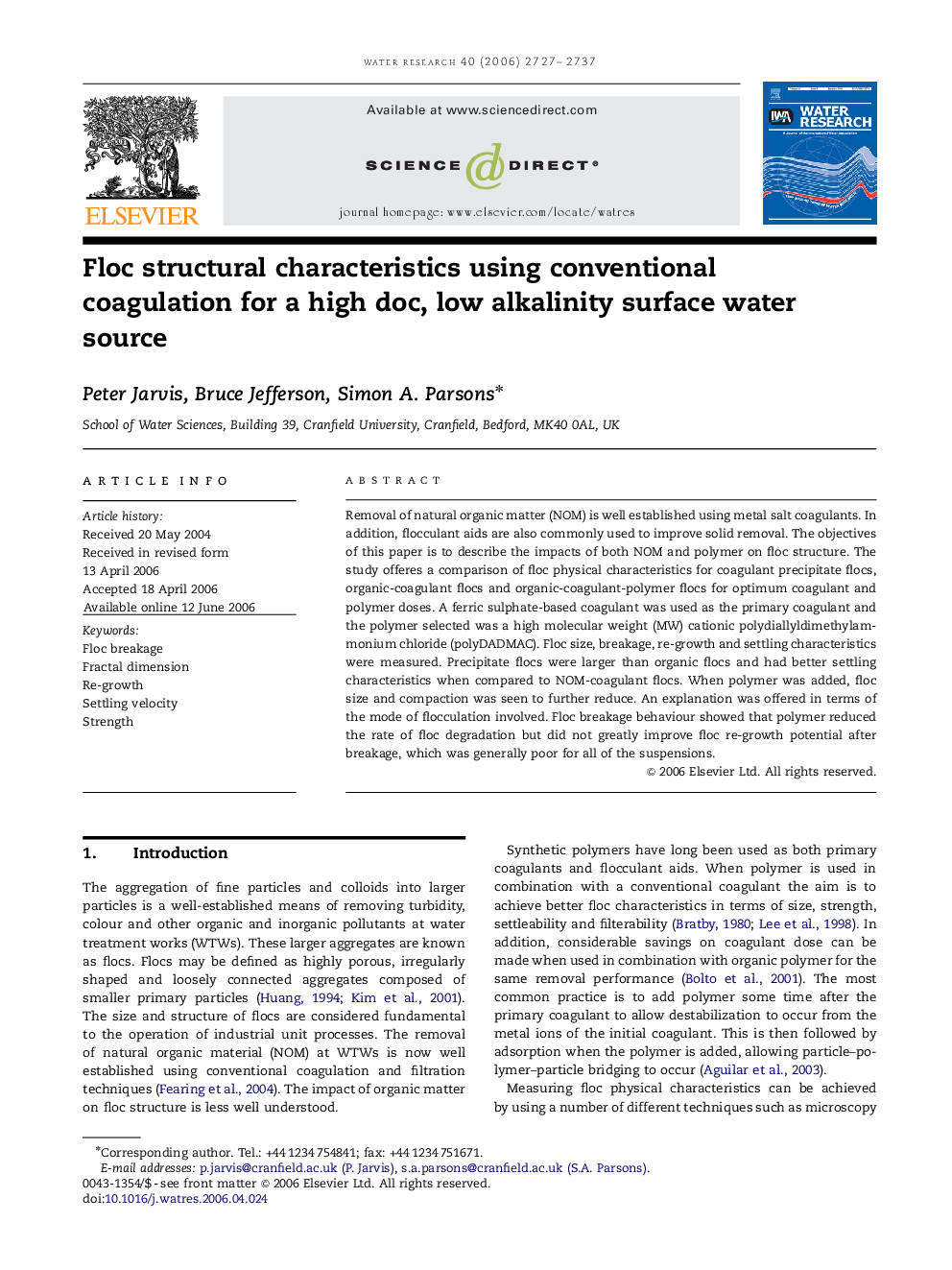| Article ID | Journal | Published Year | Pages | File Type |
|---|---|---|---|---|
| 4485704 | Water Research | 2006 | 11 Pages |
Removal of natural organic matter (NOM) is well established using metal salt coagulants. In addition, flocculant aids are also commonly used to improve solid removal. The objectives of this paper is to describe the impacts of both NOM and polymer on floc structure. The study offeres a comparison of floc physical characteristics for coagulant precipitate flocs, organic-coagulant flocs and organic-coagulant-polymer flocs for optimum coagulant and polymer doses. A ferric sulphate-based coagulant was used as the primary coagulant and the polymer selected was a high molecular weight (MW) cationic polydiallyldimethylammonium chloride (polyDADMAC). Floc size, breakage, re-growth and settling characteristics were measured. Precipitate flocs were larger than organic flocs and had better settling characteristics when compared to NOM-coagulant flocs. When polymer was added, floc size and compaction was seen to further reduce. An explanation was offered in terms of the mode of flocculation involved. Floc breakage behaviour showed that polymer reduced the rate of floc degradation but did not greatly improve floc re-growth potential after breakage, which was generally poor for all of the suspensions.
